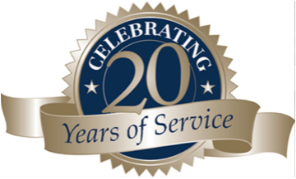We will get back to you as soon as possible
Please try again later
We will get back to you as soon as possible
Please try again later
Helpful Information
Flushing Procedures
Contamination in fluid of a hydraulic system is the primary cause of failure.
THIS IS WHAT YOU DO AFTER DETERMINING THAT THE HYDRAULIC COMPONENT NEEDS TO BE REPLACED:
Before installing new major components, the system must be completely free of contamination. Changing the filter element and fluid is not enough to thoroughly clean the system. For this reason we have derived the following list of procedures that when followed step-by-step, will help to insure system cleanliness resulting in longer hydraulic component life.
- Drain the hydraulic fluid from the lowest level in the system.
- Remove the old hydraulic pumps and/or motors to be remanufactured.
- Remove the filter elements.
- Check all suction hoses for kinks, collapsed or flaking liners, or any other obstructions. Inspect all other hoses and fittings in the related system and replace as required.
- Check the inside of the hydraulic reservoir for contamination (particles of steel or brass, sludge, dirt, etc.) and be sure that there are no obstructions in the suction or return system components.
- Flush and blow out all hoses in the circuit, pipes, tubing, filter housings and reservoir with solvents to remove any contamination.
- Reserve flush the oil cooler to remove contaminants.
- Wipe out the inside of the hydraulic reservoir with a clean lint-free towel.
- Clean all pump and motor fittings to be replaced and install new "O-Rings" as required.
- Replace all filter elements, gaskets, and seals as required.
- Keep all hoses and fittings capped after cleaning to prevent contamination from entering the system.
- Reinstall all pumps and motors (on replacement motors, apply a thin coat of lubricant to motor shaft.
- Fill hydraulic reservoir, hydraulic pump and motor cases, hoses, lines, etc. with new, clean pre-filtered fluid. Insure that fluids meet the specifications as shown in your operators manual.
- Be sure to fill the pump and motor cases before start-up. Begin the start-up procedure.
- Operate all hydraulic functions, including stroking all cylinders, to insure that any contamination possibly left in the system flows through the new filtration media prior to putting the machine back in service.
Hydraulic and Hydrostatic Basics Part 1
AWhile the technical function of a Hydrostatic drive system can be very complicated, the service to keep it in good shape and prevent costly system failures doesn't need to be. Lets start with the basics:
1: Properly filled reservoir of clean oil
The oil is the lifeblood of the drive system. It transmits the power, cools, and lubricates the components. If the oil level is low then the system can cavitate and become damaged, if it is extremely low then it can run dry and fail. Plugged breathers, water in the tank, or punctures that allow dirt into the oil will also cause damage to the components. Make sure your tank is filled and in good condition, and your breather is clean and free of debris and moisture.
2: Correct oil in the system
There are many different grades, viscosities, and brands of oil used in hydraulic and hydrostatic systems. Different viscosities can be speced for low temperature vs high temperature operation. Using a low temperature oil in a hot climate can cause premature wear and failure; using a high temperature oil in a cold climate can cause failure. In addition some of these fluids DO NOT mix with other brands or types of fluids and can cause problems. Other types of oil, like food grade oils, require more frequent service. Make sure the oil in your system is the correct oil the OEM recommends, do not mix brands and grades of oil in your system.
3: Filters and screens
Filters are critical to your hydrostatic drive system. Contamination in oil can cause severe damage very quickly. With many modern systems moving to sensitive electronic controls and higher operating pressures, oil cleanliness is more important than ever. Change your filters frequently, and don't cheap out on them. Many knock-off brands say they will fit and work but the only thing that is the same as the OEM filter is the threads! Make sure your filters match the filtration specification as well as the mount size to make sure your oil is actually being cleaned.
4: Suction hoses and fittings
Suction hoses deliver the life blood of your system from the tank to the pump. If these hoses are pinched, kinked, rubbed through, or otherwise damaged; then your system may not be getting the oil it needs. Kinks and crushed lines can even lead to de-lamination of the lining of the hose, causing debris to flow directly into the pump. If these lines leak when the machine sits idle then they will allow air and dirt to be sucked straight into the pump causing damage.
5: Oil cooler and fan
Many newer systems are engineered to keep production and service costs low, leading to smaller system reservoirs. With this trend in design oil coolers are more critical than ever. If a cooler fan or thermostat fails, fluid temperatures can climb rapidly. Hot oil lubricates poorly, damages seals, and shortens the life of your system. Make sure the fins and tubes on your oil cooler are clean and the fan functions correctly. Thermostatically controlled fans may turn on or off without warning, so be careful!
These basic checks will be a good start on the way to keeping your equipment up and running for a long time!
